
Journey to Agile: 5 implementation challenges to prepare for
Reading time: about 11 min
Agile software development has been found time and time again to be an effective approach for delivering customer value for many organizations, but that doesn’t mean implementing it doesn’t come without challenges.
Consider this: Leading an Agile team is a lot like a fantasy role-playing game (RPG). The Scrum Master is like the Game Master leading the Scrum team, or party, on a quest toward customer value. As new information is introduced, the party needs to react quickly, each team member bringing their own specific strengths to achieve the team’s goals.
But of course, with any epic adventure, there are obstacles you’ll have to overcome along the way (maybe not quite as daunting as defeating dragons and protecting villages).
In this post, we explore some of the common challenges you may encounter when adopting Agile practices across your organization so you can be as prepared as possible for what lies ahead on your own quest to deliver maximum customer value.
Challenge #1: Resistance to change

Let’s start with the first challenge of your Agile journey: overcoming resistance to change. Agile is all about adaptability and flexibility, but some organizations and teams are used to operating in a very different way. Integrating Agile into more rigid frameworks can be difficult, isn’t necessarily the most effective way to implement Agile, and requires change management. This is where an RPG mindset can come in to improve the way you practice Agile across your org.
RPGs allow players to escape the “character sheet” by thinking less in terms of what’s allowed and more in terms of what’s possible. This approach allows parties to improvise in ways that are novel and unexpected. For example, if the party encounters a ravine, they can wait until they find a bridge or another safe way to cross—or they can ask the barbarian to try throwing someone across. Adopting this mindset within an Agile team will allow for more creativity, flexibility, and ultimately success.
According to the 17th State of Agile Report, “47% of survey respondents pointed to a ‘generalized’ resistance to organizational change or ‘culture clash’ as the reasons why the business side isn’t adopting Agile…”
Additionally, survey respondents who said they weren’t satisfied with Agile practices at their company listed the top reason as “their company still has many legacy systems requiring a mixed approach.”
There are many ways to counteract this resistance to change. After leaders choose to implement an Agile framework, they may take a step back and allow teams to adopt the methodology that works best for them. After all, Agile is meant to be adapted to each group’s needs, so teams need the space to try a framework and iterate. And if teams are allowed some flexibility to make Agile work for them, Agile will be more successful throughout the organization.
Another approach may be to invest in a visual collaboration software that teams across the company can use to increase collaboration and alignment and leverage Agile templates within that software. Templates allow teams to get started with Agile practices without starting from scratch but still allow for customization.

Browse dozens of free Agile templates available in Lucidspark.
Explore templatesChallenge #2: Implementation across a hybrid workforce
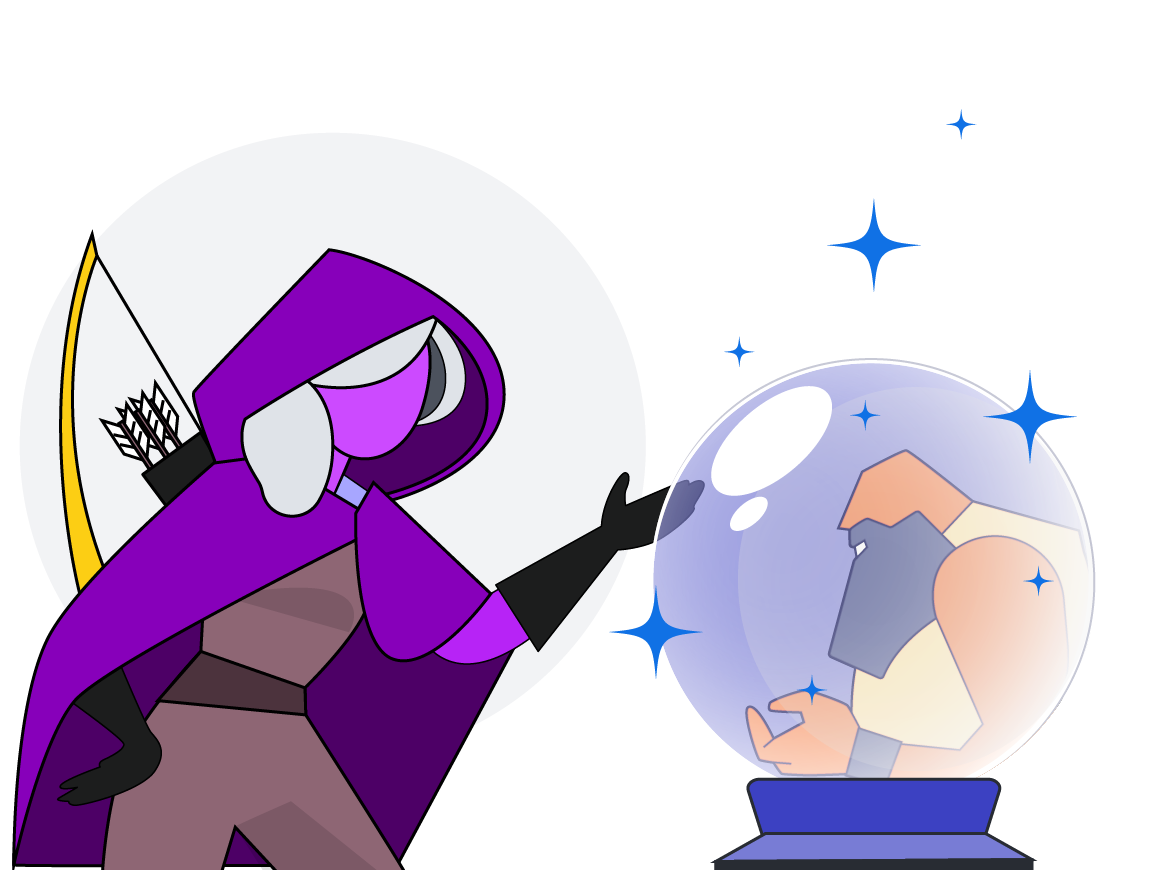
One challenge that’s becoming more prominent is the challenge of implementing Agile across a hybrid workforce. It’s similar to scheduling a role-playing game session with different players. Getting schedules to align can be one of the biggest obstacles to having a good time, and if some players move or need to go remote, this can become even more challenging. It’s fun to play in person, but with a clear plan from the get-go, a hybrid game experience can also work. For example, maybe there’s a consistent day the party always meets, and there’s a clear method of communication for anyone who attends virtually.
Agile was also originally founded with in-person collaboration in mind—the Agile Manifesto prioritizes individuals and interactions over tools and processes—but in hybrid organizations, team members may be working in different places and time zones. A team being distributed can lead to a whole array of obstacles that didn’t exist in the pre-hybrid era, obstacles such as:
- Creating equity between team members in the office and out of the office to ensure every team member has a fair chance to participate in meetings and projects.
- Fighting office cultures where team members are comfortable leaving their cameras off for meetings and getting distracted by other tasks.
Then there are obstacles that did exist when teams met fully in person, but they may be compounded by a hybrid environment. These obstacles include:
- Keeping everyone informed and up to date when decisions are often being made asynchronously.
- Keeping processes consistent across a team.
These obstacles are challenging to address on their own, but implementing an Agile framework on top of them presents another layer of complexity.
Potential solutions to this challenge are finding a way for teams to collaborate both asynchronously and in real time and keeping a single source of truth and a centralized workspace for teams to refer back to. The good news is that if you pick the right visual collaboration software, it can serve as all three: a collaboration solution, a single source of truth, and a centralized workspace. Plus, using visual collaboration software can help you prioritize individuals and interactions by providing a place for team icebreakers, feedback, and connection.
Challenge #3: Scaling Agile for large teams
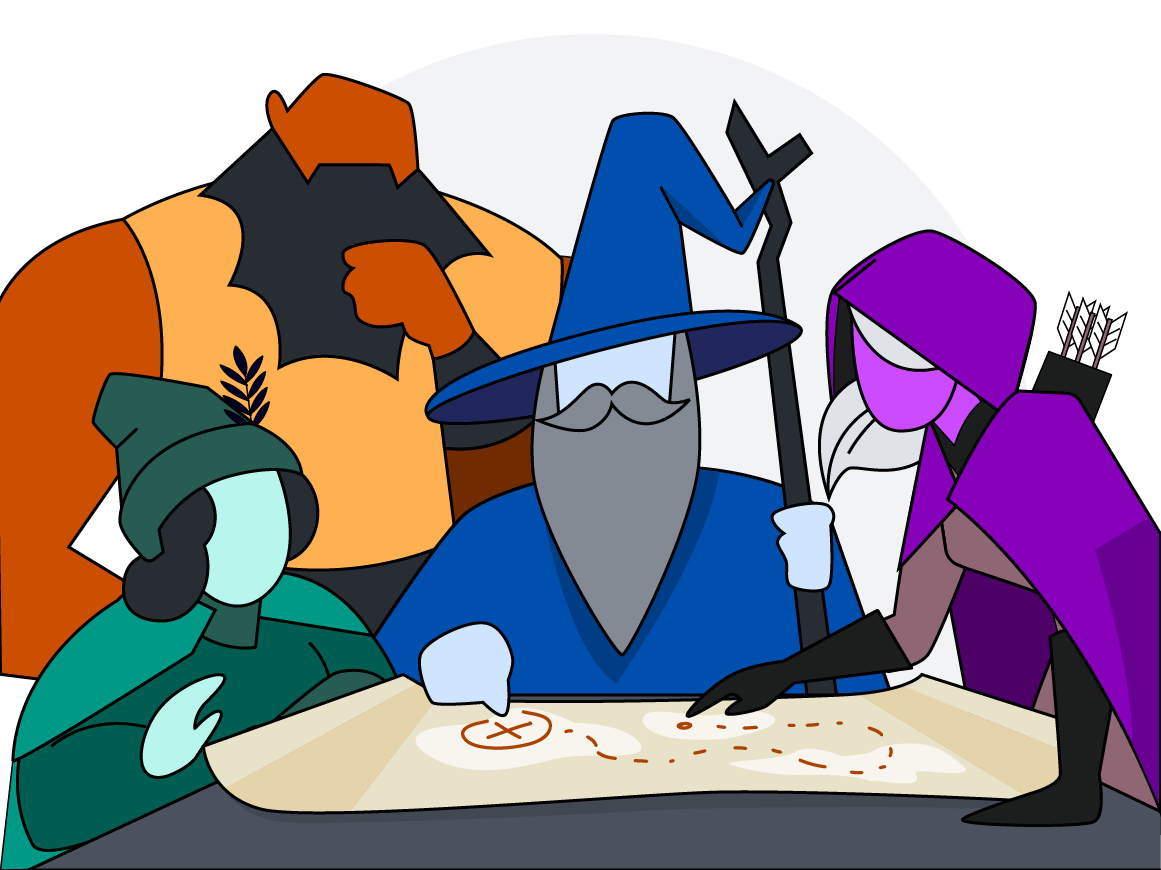
Just like in a fantasy role-playing game, the bigger the party you’re coordinating a campaign with, the longer it takes to make decisions and move through your campaign. While any organization could face challenges when adopting Agile, it can be even more challenging for large teams or teams with complex, cross-functional projects.
According to the 17th State of Agile Report, “Those in small companies are more likely than those in medium and large ones to say [enterprise Agile] is working well for them (52% vs. 39% & 43%), while those in medium and large ones are more likely to say it is not working well (30% & 29% vs. 17%).”
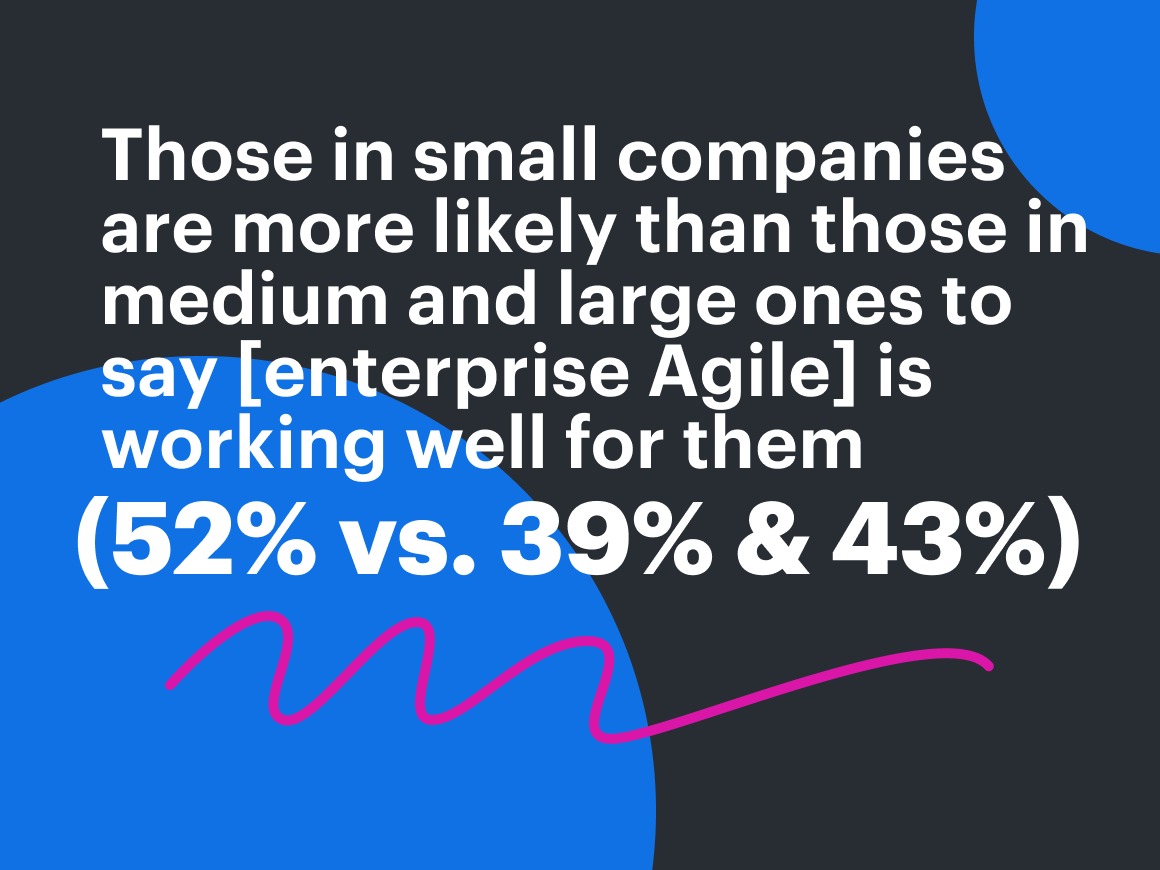
And why might that be? The report provided this insight in the executive summary:
“...it’s likely that scaling Agile adoption across the enterprise comes down to a fundamental disconnect between how business leaders define the framework and how the practitioners actually use it. The business side is, understandably, hyper-focused on creating value for the customer and thus the business, but that’s really not the reason why Agile was created or why it’s been so successful at the team level over the last years. This difference between an enterprise approach and a team approach could be creating very real culture clashes within organizations trying to grapple with modern software development, increased customer satisfaction, and improved business value.”
This culture clash between business leaders and teams can create resistance to change as we talked about in the previous section, and that resistance to change may be amplified in an organization trying to scale Agile across many different teams and individuals, slowing down progress. However, it may be helpful to remember that in RPGs, the Game Master is not the opponent of the other players. A Game Master may have friction with players depending on everyone’s characters, but in a good campaign, the best results come from working together and keeping communication open.
Some organizations address the challenge of scaling by using frameworks such as SAFe (Scaled Agile Framework), Scrum@Scale/Scrum of Scrums, or LeSS (Large Scale Scrum).
Another potential solution for scaling Agile more effectively? You guessed it: visual collaboration software. Visual collaboration software allows organizations of all different sizes to collaborate across a shared platform and increase alignment. The Lucid Visual Collaboration Suite even allows users to seamlessly switch between Lucidchart, an intelligent diagramming application, and Lucidspark, a virtual whiteboard, so they can use the right set of tools for the task at hand. This can be particularly helpful for cross-functional teams who have different needs but still need a shared space to work together. On your Agile quest, you can think of Lucid as your toolbelt filled with spells, potions, and more to help you achieve objectives.
Challenge #4: Maintaining up-to-date documentation

Up next in your Agile quest is the challenge of maintaining documentation. Every RPG campaign needs thorough session notes to reference later if a new player joins the game or if the party needs to remember the context of the last session. This is just like how every Agile team needs documentation for team members and stakeholders to reference that gives context for plans and decisions—the more visuals the better!
One of the core values outlined in the Agile Manifesto is “working software over comprehensive documentation.” Some Agile practitioners have taken this to mean that documentation is not important, but it was not the original intent of the Agile Manifesto authors to forego documentation altogether. Agile is just a more flexible, fast-paced way of working that encourages making progress on product development rather than devoting a lot of time to creating documentation.
Bryan Stallings, Lucid chief evangelist, Agile coach, and Certified Scrum Trainer, suggests thinking about documentation like this: “How does the value of the work you’re putting in now benefit those who have to support it, maintain it, and add on to it later? We want whatever value we create now to persist when there are hard times, difficulties, or upset customers. We want to be able to go back and get the guidance we need from the documentation.”
You can imagine how ineffective it would be to run a months-long RPG campaign without documenting session notes. Similarly, imagine how messy it would be if you implemented Agile without any guidance around documentation maintenance and every team, or even every team member, had their own system for what was documented.
A more effective way to maintain documentation in an Agile environment is to create living documentation. Living documentation is where the work itself becomes the documentation. For example, if a leadership team used a virtual whiteboard to plan company OKRs, that board would become the documentation to share and reference later—no extra documentation needed! This allows for the fast pace and flexibility Agile calls for.
Additionally, if you use a visual collaboration solution that integrates with software like Confluence, such as Lucid does, you can provide a single source of truth for documentation rather than have information dispersed across multiple locations.
Challenge #5: Not everyone is an Agile expert
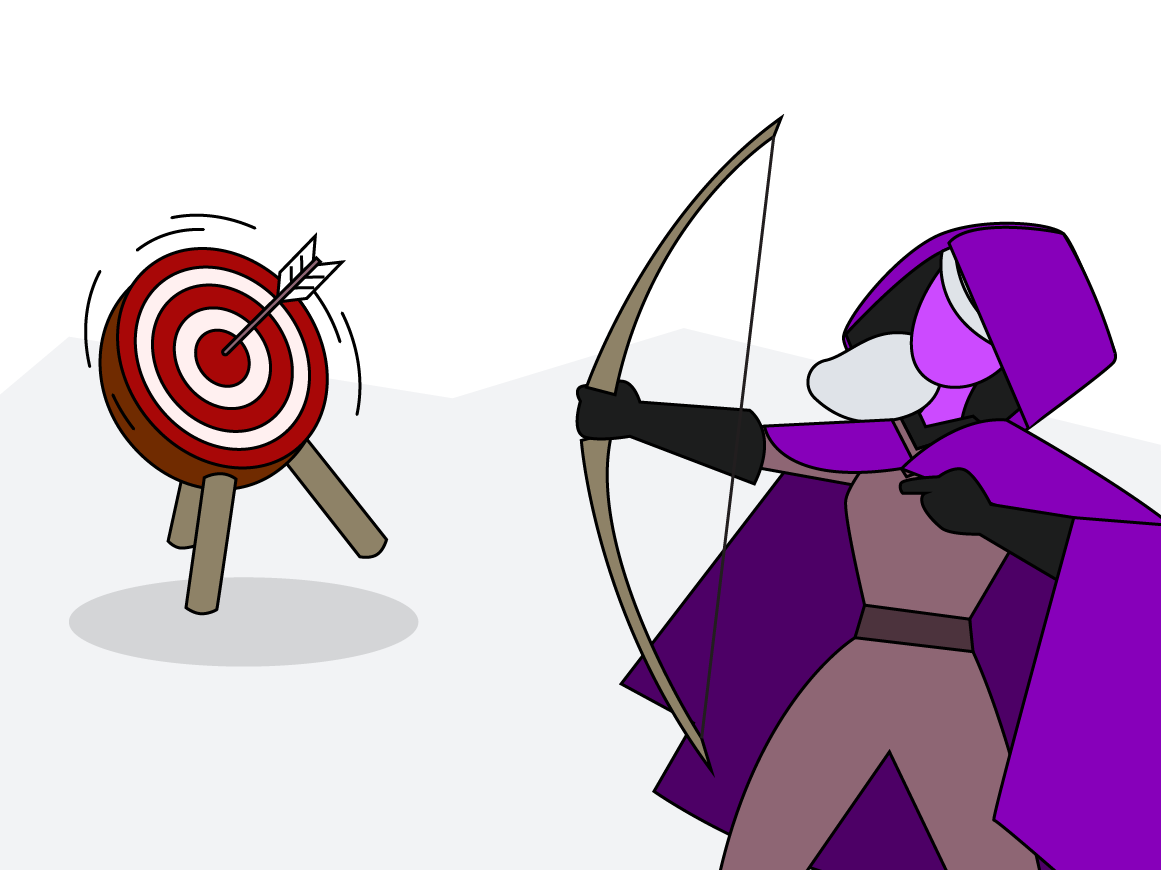
Last but not least, RPGs have a lot of mechanics to learn, and not everyone is going to remember all of the information. Just like not everyone in an organization will be an Agile expert, even if they’re expected to work in accordance with Agile principles.
According to the 17th State of Agile Report, “37% [of respondents] said business teams simply don’t understand what Agile is or what it can do, while 27% said there is not enough training.”
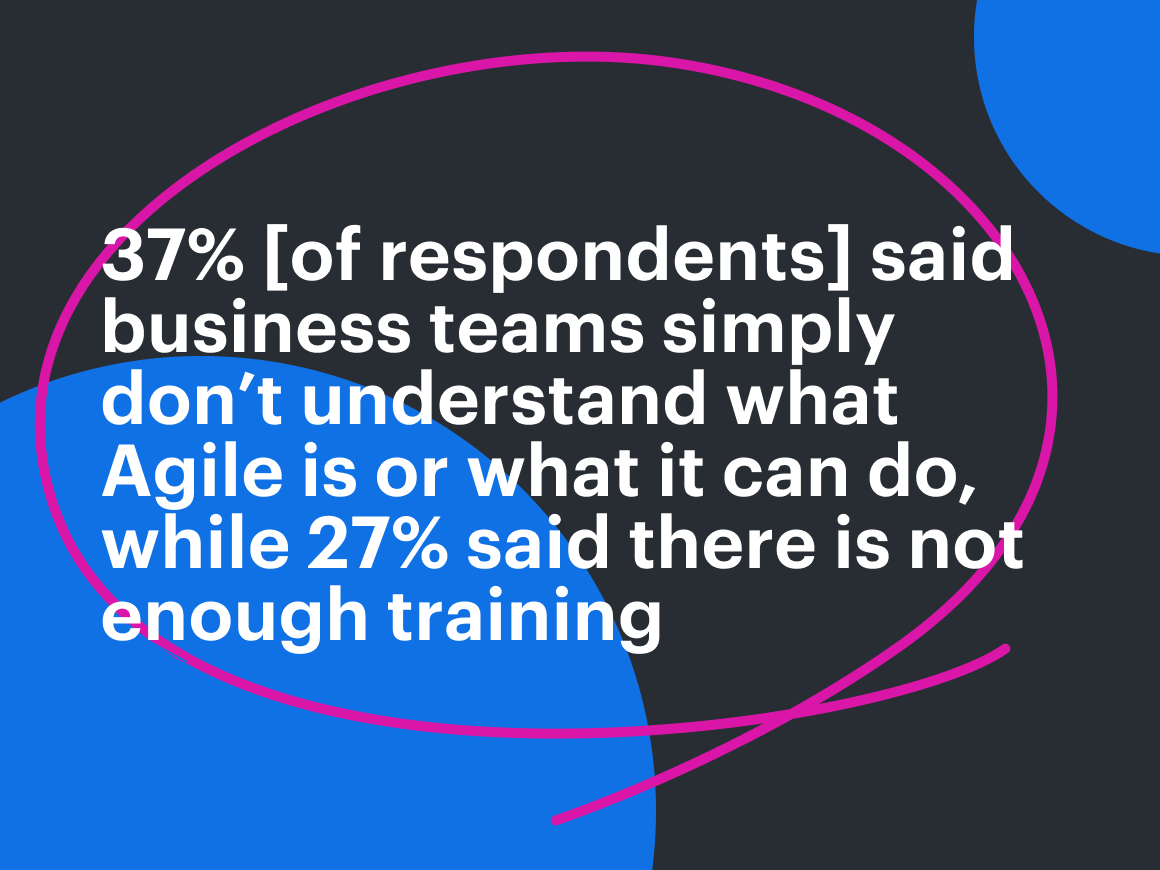
Agile software development may be new to some team members and may require some education before your team can get up and running with it. However, not everyone needs to be an expert. On your Agile quest, each team member brings different strengths to the table and plays a different role. You’ll need metaphorical wizards, swashbucklers, rangers, and more to achieve your goal of delivering customer value. Remember, a good Game Master doesn’t need to remember the mechanics of every character but knowing what specialties a character has can help them set their party up for success. Similarly, a good Scrum Master knows the strengths of individual team members and can help them play to those strengths.
Along with embracing the different strengths your team brings to the table, setting up group training can go a long way in helping teams understand the new framework. You may hold one training session at first, and then break off into smaller trainings if needed. Keep in mind, everyone should have at least a foundational understanding of the Agile Manifesto, which outlines core Agile values and principles.
Good facilitation also goes a long way. If you have some Agile coaches and Scrum Masters on your team who know the ins and outs of Agile, and who can facilitate meetings and Agile events, they can help keep everyone else on track.
Now that you know some of the challenges and obstacles that lie ahead on your Agile quest, you can help prepare your party for the adventure.

Take Agile to the next level for your organization by using Lucid.
Learn moreAbout Lucid
Lucid Software is the leader in visual collaboration and work acceleration, helping teams see and build the future by turning ideas into reality. Its products include the Lucid Visual Collaboration Suite (Lucidchart and Lucidspark) and airfocus. The Lucid Visual Collaboration Suite, combined with powerful accelerators for business agility, cloud, and process transformation, empowers organizations to streamline work, foster alignment, and drive business transformation at scale. airfocus, an AI-powered product management and roadmapping platform, extends these capabilities by helping teams prioritize work, define product strategy, and align execution with business goals. The most used work acceleration platform by the Fortune 500, Lucid's solutions are trusted by more than 100 million users across enterprises worldwide, including Google, GE, and NBC Universal. Lucid partners with leaders such as Google, Atlassian, and Microsoft, and has received numerous awards for its products, growth, and workplace culture.
Related articles
Agile Manifesto co-author James Grenning on the importance of documentation
In this interview, Agile Manifesto co-author James Grenning discusses how modern-day Agile teams can strike the right balance on documentation to work efficiently.
How to sustain the Agile Manifesto values in today’s workforce
Get expert tips on upholding each Agile Manifesto value in complex, hybrid working environments.
How visual collaboration supports Agile teams
From increasing transparency to simplifying documentation, learn why Agile teams today rely on visual collaboration.
5 mistakes organizations make when applying Agile practices (+ how to avoid them)
Agile isn’t as simple as following a recipe. Get tips on how to avoid common mistakes and make Agile work for your team.
